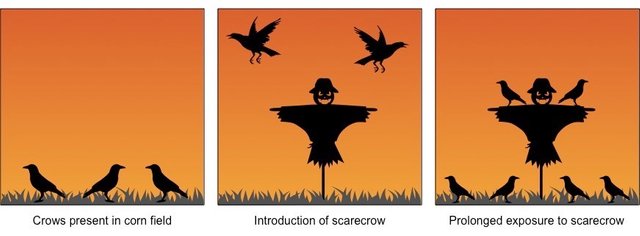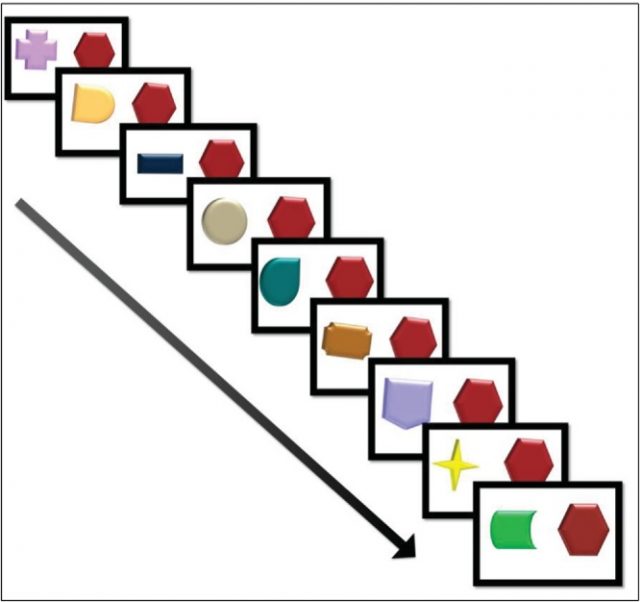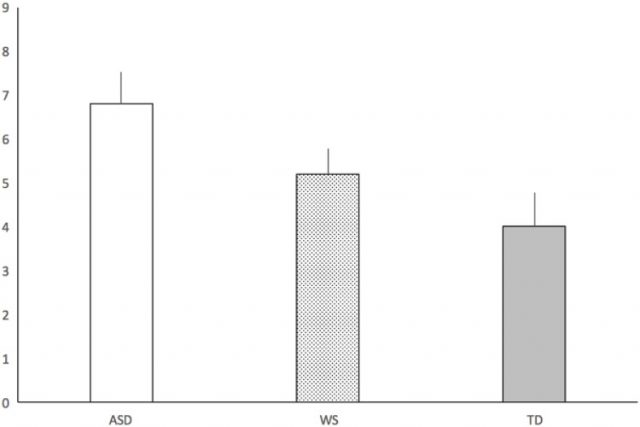Habituation and autism
Some people with autism do not get used to certain stimuli as normotypical people seem to do without problem. This would fit in with what in neuroscience, particularly in learning and memory issues, is called habituation.
Habituation is a process by which, when faced with a repeated stimulus, the response is less and less intense. It is considered the most primitive form of learning, the body “remembers” and “learns”, and it occurs at multiple levels, from the cell to the organism as a whole. A typical example is when we walk into a crowded room, a classroom full of teenagers or a poorly ventilated gym, and soon we no longer notice the smell. Another example is when we don’t notice the labels on our clothes a few seconds after we get dressed.

Habituation is preserved in different species, is essential for selective attention and is considered a prerequisite for cognitive functions 1. It has a clear evolutionary value because it contributes to the adaptability of an organism to its environment. When faced with a familiar, predictable or repetitive stimulus, it reduces the response, and behavior is organized and directed to respond only to some stimuli, in principle more significant, novel or supposedly more important. This is important. In any situation, as simple as it may be, so many stimuli intervene that if the organism had to respond to all of them, its behavior would be chaotic, so it is necessary to filter that information. It is possible that this, an alteration in the habituation system with abnormal filtering, is happening to people with autism.
People with autism spectrum disorders (ASD) often show prolonged attention to visual repetitions, such as watching the spin cycle of a washing machine, and have reduced attention to social stimuli, such as the faces of familiar and unfamiliar people. These phenomena are thought to be related to the alterations in social activity and rigidity in behavior that are now considered to be defining aspects of ASD.
There is considerable evidence that many people with autism do not become accustomed to sensory stimuli or are slower to do so. Difficulties with habituation to some stimuli can lead to sensory overload or overreaction, which is often seen in people with ASD. If we don’t stop hearing the buzzing of the projection cannon in a classroom it is very difficult for us to attend to the teacher properly. If we don’t stop feeling the labels on our clothes, we will feel annoyed or strongly reject some textures or even prefer to take off our clothes.
Habituation is also important in neurodevelopment. From childhood onwards, repeated exposure to an event makes children less interested in it and less responsive over time. This process reflects an evolutionary change whereby there is a strategic reallocation of neural processing resources from what is “already known” to “what is not yet known”, thus promoting learning and adaptive responses to changes in the environment. Habituation in childhood is believed to reflect efficiency in information processing and to predict cognitive functioning in later life.
It has been proposed that a lack of habituation to sensory input may lead to an exaggerated perception of environmental changes in children with ASD. This in turn would lead to sensory overstimulation, distress, and perception of the environment as highly unpredictable. Repetitive behaviors, so common in children with ASD, would be a way to limit and control this unpredictability by imposing a structure. Repetitive behaviors could be a means of preventing anxiety caused by inefficient habituation to sensory stimuli.
Studies of habituation in people with ASD have yielded conflicting results. Some authors noted an absence of habituation in response to repetitive observation of visual stimuli (white circles on a black background); others observed that adults with ASD were slower than the control group in reducing response to repeated stimuli in a startle model, and other authors saw reduced habituation to repeated sounds in children at high risk for autism. However, other studies have found no difference between people with ASD and controls and have not found an association between habituation and repetitive behaviors. One possibility is that this heterogeneity in response is due to subgroups with different habituation profiles within the ASD population. For example, Sarah Schoen and her group 2, within a sample of 40 children with ASD between 5 and 15 years found two groups one with slower latency and faster habituation and others with faster latency and slower habituation in response to sensory stimuli. Latency is the average time from the beginning of the response in the dermal conductance to the peak of response.
Another part of this variability may be due to the different ways in which stimuli and responses have been measured, using reflexes, evoked potentials, electrodermal activity and neuroimaging. Neuroimaging studies of people with ASD have focused on social stimuli, such as faces. These studies show that the amygdala of people with ASD becomes accustomed to faces more slowly than the amygdala of normotypical people. In some ways, the passage from unknown to known person would be faster in neurotypical people and that could cause social difficulties for people with ASD.
With respect to sensory stimuli, studies that have examined habituation to auditory stimuli have focused on children with ASD and use as a tool for measuring electrodermal activity, the electrical conductivity of the skin. The electrical resistance of the skin varies according to the state of the sweat glands in the skin, which in turn are controlled by the sympathetic nervous system. The skin’s conductivity gives us simple measures that can serve as an indication of psychological arousal, physiological changes, emotional responses or activation of the sympathetic nervous system.

A study by Vivanti et al. 3 has examined visual attention in responses to novel and repeated stimuli in children with ASD and normotypical children. Typically developing children showed less attention to the repeated stimulus and increased attention to the new stimulus, while in children with ASD there was a decrease in attention to both types of stimuli over time.

The conclusion, to date, is that habituation is altered in people with ASD. Children with ASD needed more stimuli to begin to show habituation to repeated stimuli. Contrary to expectations, slow habituation in children with ASD was associated with less severity of restrictive and repetitive behaviors. This slower habituation was not related to social functioning. Perhaps the explanation is that previous research has focused on habituation to social stimuli and it is possible that when non-social stimuli are used, a dimension of the habituation process is addressed that does not contribute to the severity of social symptoms.
References
- Cheng Y, Jin P (2019). Dysfunction of Habituation Learning: A Novel Pathogenic Paradigm of Intellectual Disability and Autism Spectrum Disorder. Biol Psych 86(4): 253–254. doi:10.1016/j.biopsych.2019.06.012 ↩
- Schoen SA, Miller LJ, Brett-Green B, Hepburn SL (2008) Psychophysiology of children with autism spectrum disorder. Res. Autism Spectrum Disord 2(3): 417-429. ↩
- Vivanti G, Hocking DR, Fanning PAJ, Uljarevic M, Postorino V, Mazzone L, Dissanayake C (2018) Attention to novelty versus repetition: Contrasting habituation profiles in Autism and Williams syndrome. Dev Cogn Neurosci 29: 54-60. ↩
2 comments
[…] Arroparen etiketak ez nabaritzea da ohikoena. Jantzi ostean denbora pasata, arropa bera ez nabaritzea da ohikoena. Ohitze deitutako mekanismoa da hau, bizitzarekin aurrera egitea ahalbidetzen duena. Berdin funtzionatzen du, baina, autismoa duten pertsonengan? JR Alonsoren Habituation and autism […]
[…] https://mappingignorance.org/2020/02/17/habituation-and-autism/ […]